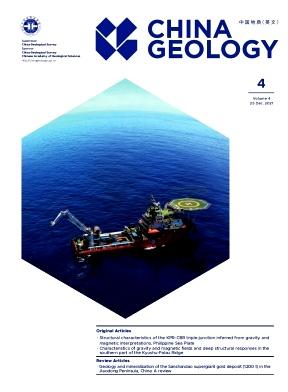Insights into wind-driven heavy metal pollution and human health risk assessment in a typical lead-zinc mining area of northern China
IF 4.7
3区 地球科学
Q1 GEOSCIENCES, MULTIDISCIPLINARY
引用次数: 0
Abstract
Long-term mining activities can result in the release of heavy metals into soil, ultimately posing a threat to human health. In arid and semi-arid regions, wind-driven transport of these toxic metals from mining areas represents a primary mechanism for their spatial distribution. To evaluate pollution levels and associated health risks of eight metals, A total of 95 soil samples, corresponding 25 vegetable samples and 3 tailing samples were collected from various land types surrounding a typical Pb-Zn mine in northern China’s semi-arid region. The mean concentrations of As, Cd, Cr, Cu, Hg, Ni, Pb and Zn in soils were 62.8, 0.27, 29.6, 11.5, 0.02, 14.4, 49.9 and 109.5 mg/kg, respectively. Among these, As, Cd, Pb, and Zn emerged as the predominant pollutants, with some samples exceeding national risk screening values. The results of contamination factor (CF), pollution load index (PLI) and geo-accumulation index (Igeo) indicated that heavy metals in most soils exhibited non-polluted level or slight pollution level, though localized severe contamination by As, Cd, Pb, and Zn was observed. Spatial distribution analysis demonstrated similar dispersion patterns for As, Cd, Pb, and Zn, with wind-mediated transport extending up to 2.0 km from contamination sources. Pearson’s correlation analysis and principal component analysis (PCA) suggested that As, Cd, Pb and Zn mainly originated from mining activities, and Cr, Ni, Cu and Hg derived from soil parent materials. All vegetable samples contained metal concentrations below food safety thresholds. Health risk assessment showed hazard quotient (HQ) values for individual metals below 1 across all exposure groups, indicating negligible non-carcinogenic risk. Similarly, carcinogenic risk (CR) values for As, Cd, Cr, and Pb fell within acceptable ranges. While mining activities have induced significant localized contamination, the overall affected area remains limited in arid and semi-arid regions. However, greater attention should be directed toward potential health implications from vegetable consumption in proximity to mining operations within arid and semi-arid regions.
中国北方典型铅锌矿区风致重金属污染及人体健康风险评价
长期采矿活动可能导致重金属释放到土壤中,最终对人类健康构成威胁。在干旱和半干旱地区,这些有毒金属的空间分布主要是由矿区的风力运输造成的。为评价8种金属的污染水平及相关健康风险,在中国北方半干旱区某典型铅锌矿周边不同土地类型中采集了95份土壤样品、25份蔬菜样品和3份尾矿样品。土壤中As、Cd、Cr、Cu、Hg、Ni、Pb和Zn的平均浓度分别为62.8、0.27、29.6、11.5、0.02、14.4、49.9和109.5 mg/kg。其中,As、Cd、Pb、Zn是主要污染物,部分样本超过国家风险筛查值。污染因子(CF)、污染负荷指数(PLI)和土壤累积指数(Igeo)结果表明,大部分土壤重金属表现为未污染或轻度污染,但局部存在As、Cd、Pb和Zn的严重污染。砷、镉、铅和锌的空间分布分析表明,砷、镉、铅和锌具有相似的分散模式,并且风介导的迁移从污染源扩展到2.0 km。Pearson相关分析和主成分分析表明,As、Cd、Pb、Zn主要来源于采矿活动,Cr、Ni、Cu、Hg主要来源于土壤母质。所有蔬菜样本的金属含量均低于食物安全阈值。健康风险评估显示,在所有接触组中,个别金属的危害商(HQ)值均低于1,表明非致癌风险可以忽略不计。同样,砷、镉、铬和铅的致癌风险(CR)值也在可接受范围内。虽然采矿活动造成了严重的局部污染,但总的受影响地区仍然限于干旱和半干旱地区。但是,应更多地注意在干旱和半干旱地区采矿作业附近食用蔬菜可能对健康造成的影响。
本文章由计算机程序翻译,如有差异,请以英文原文为准。
求助全文
约1分钟内获得全文
求助全文

 求助内容:
求助内容: 应助结果提醒方式:
应助结果提醒方式:


